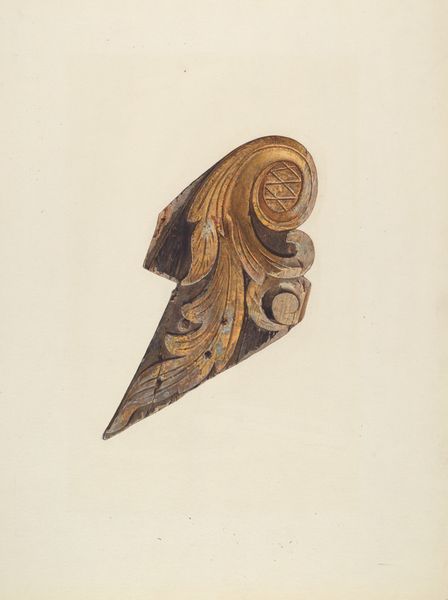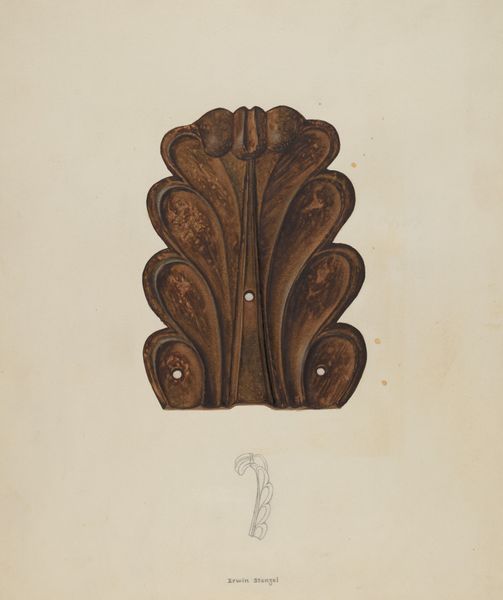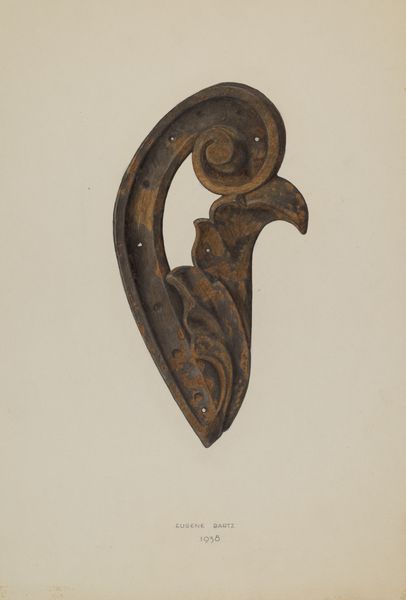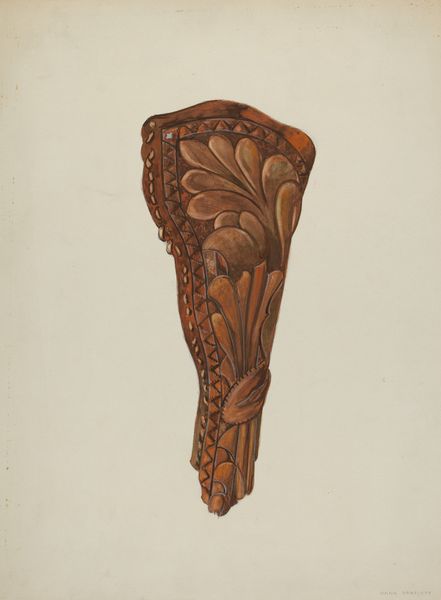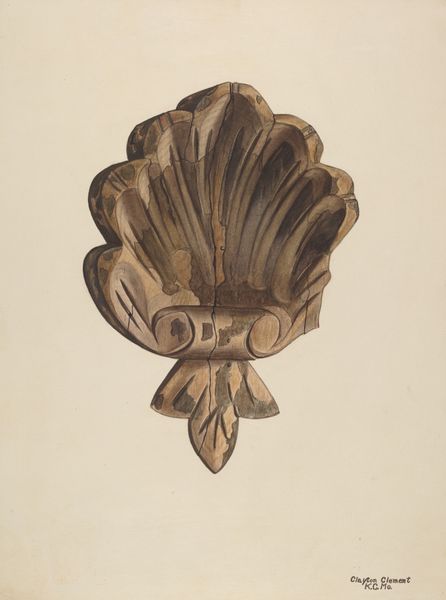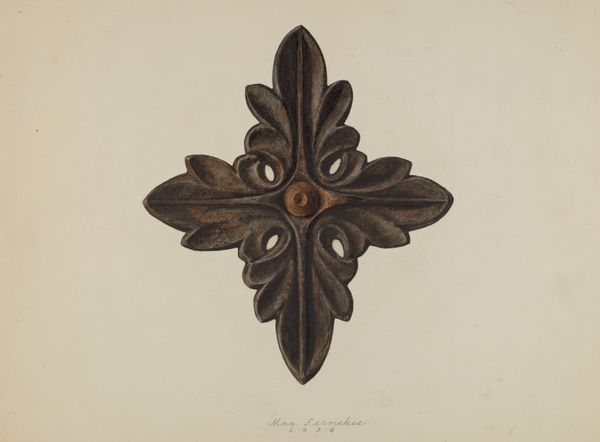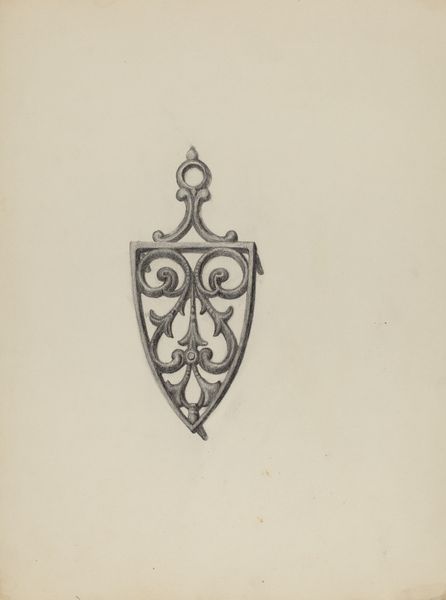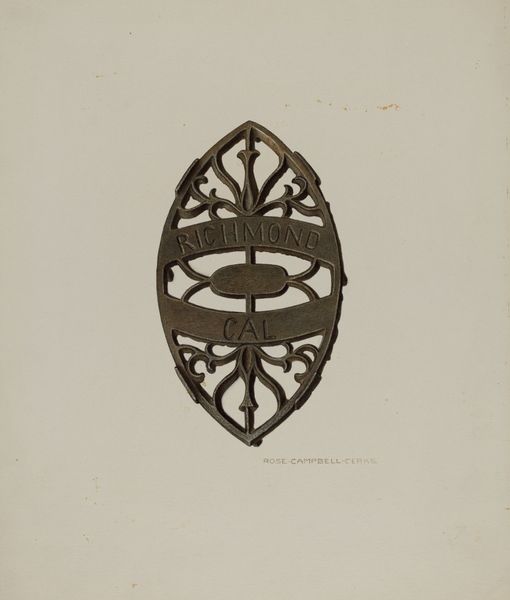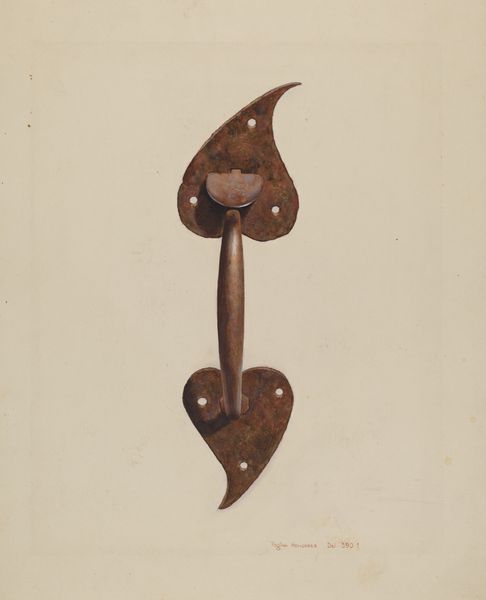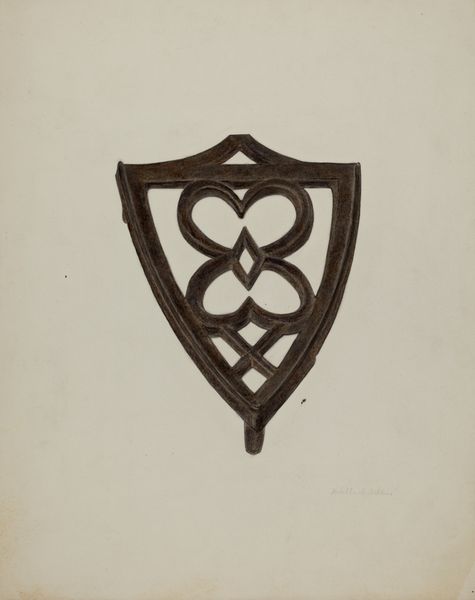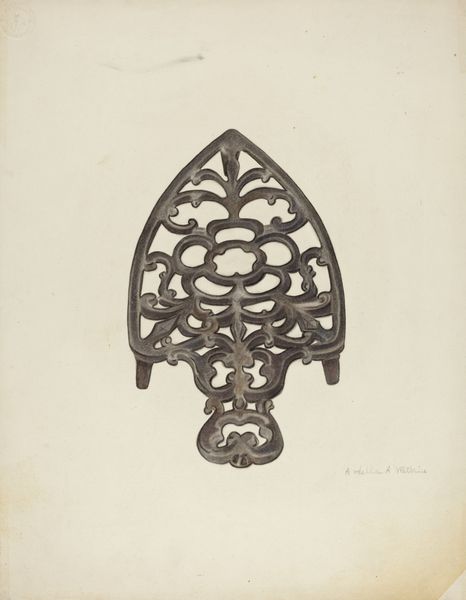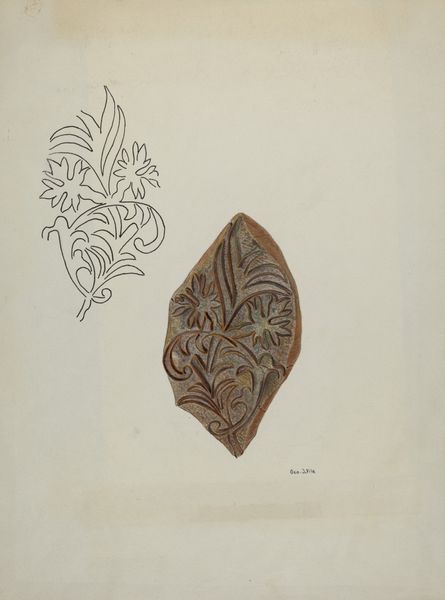
drawing, wood
#
drawing
#
form
#
wood
#
academic-art
Dimensions: overall: 35.5 x 24.6 cm (14 x 9 11/16 in.)
Copyright: National Gallery of Art: CC0 1.0
Curator: Here we have Albert Geuppert’s “Crowning Leaf,” created in 1938. Geuppert’s works often documented decorative woodwork during a time of significant architectural change. Editor: It’s quite striking. My first thought is how meticulously rendered the wood grain is. It gives the impression of age and texture even though it’s a drawing. Curator: Absolutely, and the academic style gives it a sense of objective documentation but that’s deceiving; these forms were carefully chosen and framed. What appears simple is actually laden with historical and stylistic choices about what should be preserved from a quickly vanishing world. Editor: You are so right, that formal repetition of the leaves creates an almost rhythmic visual experience, very organized, you see, with a focal point along the vertical center... It's lovely. Almost heraldic in its symmetry. The artist masterfully plays with light and shadow too, each leaf seems to almost curl off the surface because of it. Curator: Exactly! These details often adorned buildings with distinct political messages, it reflects cultural traditions, often connected to community identities. Showing the value of a craftsmanship tradition. Editor: The subdued palette definitely enhances the feeling of solidity, and this drawing, or, at least its representation looks surprisingly monumental given its probably very small actual size. The texture appears so believable and its scale feels altered in my perception. Curator: By presenting “Crowning Leaf” as a standalone drawing, Geuppert invites us to contemplate not only the beauty of form and design, but also the socio-cultural narrative. He invites us to explore the story it whispers about its original place and its history within evolving craft traditions. Editor: It becomes so clear looking closer, that Geuppert elevated this leaf into a formal object worthy of contemplation purely for its design merit. It encourages us to see beyond function and appreciate its construction for inherent artistry. The shadows so cleverly employed enhance and dramatize these details, they certainly do. Curator: His academic style emphasizes clarity but carries echoes from times when such carvings carried heavy weight to represent cultural continuity when facing the rapidly changing socio-economic and political background. It is this duality which is preserved. Editor: The play between naturalism and formal arrangement highlights how we imbue cultural objects with emotional and symbolic value to influence perceptions far beyond what an actual wooden component could. An interesting demonstration!
Comments
No comments
Be the first to comment and join the conversation on the ultimate creative platform.
